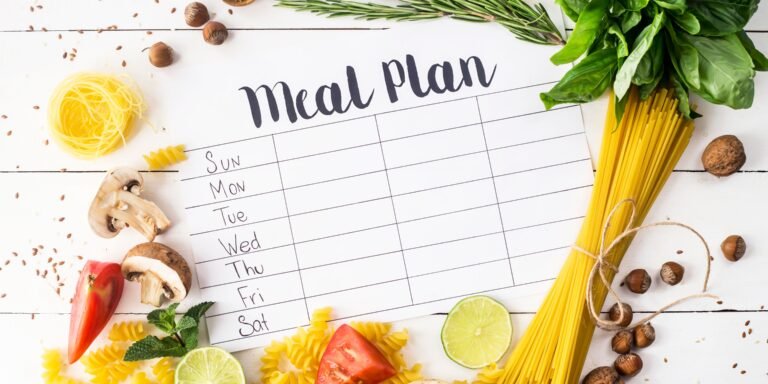The Ultimate Guide To Starting A 3 Month Emergency Food Supply
This post may contain affiliate links, full disclosure here.
Food storage planning and budgeting can be overwhelming, discouraging many people from taking action or even beginning to build any kind of extra food supply at all. Others may not even consider food storage because let’s face it, there are a lot of other things to spend money on, such as a child’s birthday, rent, a mortgage, or a new car. To be honest, my wife and I both put off putting together a food supply for a long time because, even though we knew we needed it, we were both overwhelmed and didn’t know where to begin. I’m here to tell you that getting started on a three-month food supply isn’t as difficult or expensive as you think!
See also: Top 20 Barter Items to Stockpile
Long Term Food Storage vs. 3 Month Food Supply
First, consider the distinction between a three-month food supply and long-term food storage. A three-month or short-term food supply is not the same as long-term food storage, and I have found it to be much more enjoyable to accumulate! Long-term food storage is defined as storage that lasts three months to a year or more. One aspect of long-term food storage that I find difficult to “digest” is that it frequently involves meals such as MREs and other military-style meals that simply taste disgusting.
These meals may have a long shelf life (years), but I won’t eat them on a regular basis, so when they go bad 30 years from now, I’ll have to throw them away. However, I recognize the importance of having these meals in long-term food storage and would even recommend having them in your home’s cold storage room or designated storage closet in case of an emergency. In contrast, short-term food storage of 2 weeks to 3 months allows you to eat foods and meals that you are already cooking and that taste great.
So starting a three-month food supply won’t necessitate drastically altering the meals and foods you’re already preparing and eating. It may require a little more planning upfront, but it will make meal planning easier in the long run. Set up a food rotation system in your pantry, cupboards, and food storage areas to accomplish this. This will be covered in greater detail later in this article.
How can a 3-Month Food Storage Plan Benefit You and Your Family?
Allows for simple day-to-day meal planning
During economic downturns and difficult times, it saves money.
It provides you with peace of mind in the event of an emergency, a potential income drop or job loss, or a natural disaster.
It allows you to choose what your family eats.
Aids in the planning of healthy, nutritious meals.
How to Start a 3 Month Food Supply
Getting started can be as simple as purchasing an extra can of ‘this’ and an extra bag of ‘that’ at the grocery store. Meal planning and brainstorming new pantry additions are half the battle. Whatever approach you choose, it is critical to include foods that you and your family will eat.
What Should You Include in Your Three-Month Food Supply?
- Items that you already have in your cupboards and pantry can be stored here.
- Include meals, ingredients, and food that you eat on a regular basis on your list of ideas for a three-month food supply.
- Frozen foods should be kept in the freezer.
- Non-food items should be included.
| Food Supply | 3 Month food supply for 1 person | 3 Month food supply for a family of 4 |
|---|---|---|
| Grains (Wheat, Rice, Flour, etc.) | 98 lbs | 390 lbs |
| Canned or Dried Meats (Freeze Dried, Beef, Jerky, Spam, fish, chicken, etc.) | 5 lbs | 20 lbs |
| Fats and Oils (Vegetable Oil, Peanut Butter, Shortening, etc.) | 7 lbs | 25 lbs |
| Beans (Dried Beans, Soy Beans, Split Peas, Dry Soup Mix, etc.) | 18 lbs | 70 lbs |
| Milk and Dairy (Powdered Milk, Evaporated Milk, etc.) | 22 lbs | 87 lbs |
| Sugars (Sugar, Brown Sugar, Honey, Powdered Drink Mixes, etc.) | 15 lbs | 60 lbs |
| Cooking Essentials (Salt, Baking Powder, Yeast, Vinegar, Jams, etc.) | 2 lbs | 8 lbs |
| Fruits & Vegetables (Dried) | 8 lbs | 90 lbs |
| Fruits & Vegetables (Canned) | 27 qts | 320 qts |
| Water Storage | 46 Gallons | 183 Gallons |
Items you already have in your cabinets and pantry
This could be any number of foods that you already keep on hand and consume on a daily or weekly basis. The wonderful reality of a two-week to three-month food supply is that as long as you use and rotate your food supply, most non-perishable foods will work well in your storage plan.
The most important question to ask is, “What foods cannot we live without?” Then add it to your list and gradually increase your purchases each time you go shopping. Set up a good FIFO (first in, first out) rotation method for each food item so that you use everything before it goes bad.
Canned Foods
It can be difficult to store and rotate canned foods. When dealing with canned food, the FIFO (first in, first out) method can become disorganized. To assist with this, we have discovered that a good canned food organizer and rotator is extremely useful, if not indispensable. We found one that is inexpensive and effective at rotating cans, making FIFO simple. The DecoBros Stackable Can Rack Organizer is what it’s called.
When we bought a couple of them, they were only about $20 each, and they come with adjustable plastic dividers to accommodate different can sizes. It can hold up to 36 cans, depending on the size of the cans. This canned food organiser will help you build a three-month food supply while making the organization a breeze!
More Pantry Items You can Stock Up On
- Bottled water packages, gallon jugs of water, and even 55-gallon drums of water (45 gallons of drinking water per adult for 3 months is recommended)
- White or Wheat Rice
- Pinto or other types of Beans
- Apple Sauce
- Canned Fruit and Vegetables (These make great sides to regularly eaten meals)
- Salt and favorite seasonings
- Peanut Butter
- Soup or broth
- Pasta and spaghetti sauce
- Floor, yeast, and baking powder
- Pancake Mix
- Packets of Oatmeal or just Oats
- Canned Meat (Tuna, Chicken, Beef Stew, Spam, etc.)
- Canned Vegetables (Green beans, peas, corn, tomatoes, etc.)
- Canned Fruit (Peaches, Pineapple, Pears, etc.)
- Powdered Drink Mix
- Snacks
I include these items simply because they are easy to store, have a long shelf life, and are frequently used by a large number of people. The idea here is to create a rotating 3-month food supply of foods that you already eat and enjoy!
Include meals, ingredients, and food that you consume on a regular basis
Tracking your meals allows you and your family to keep track of what you already eat, break it down by ingredient, and add it up over the number of months you want to store it for. The best part about using this method is that it can be tailored to your specific requirements.
Here’s how it works for a three-month food supply: step by step.
- Take a favourite meal from your family.
- Make a copy of the recipe and multiply it by three (this will give you 3 months of that meal if you plan on eating it once a month.) If you intend to eat it twice or three times per month, multiply each ingredient by 6 or 9, and so on.
- Purchase enough of the ingredients to stock your pantry for three months of that meal.
- Repeat for the next meal.
Stocking Up On Frozen Foods
Frozen foods should be stored… But wouldn’t they spoil if the power went out in an emergency? Yes, frozen foods in your freezer or refrigerator could spoil if the power goes out for several days. However, there are a few compelling reasons to keep up to three months’ worth of frozen foods in your short-term food storage.
For starters, including frozen foods in your short-term food storage gives you a greater variety and a wider range of meal options that you can eat on a regular basis. This is significant because you are most likely incorporating frozen or refrigerated foods into your daily meals right now. I don’t know about you, but I believe it is worthwhile to be prepared enough to continue using frozen foods even in the event of an emergency. A power outage, on the other hand, is a real concern, especially if you live in a high-risk area for natural disasters. Emergencies occur on a daily basis all over the world, so I would recommend adding an alternative power source, such as a generator, to your three-month food supply shopping list.
Second, buying frozen foods in bulk can save you money, and if you run into financial difficulties, such as a job loss, you can rest assured that you have a diverse food supply. My wife and I stock our freezer with several months’ worth of meat (beef, chicken, etc.). I like it because I know we saved money, and when I want a Sirloin Steak, I just take one out of the freezer, marinate it, and throw it on the grill. In our garage freezer, we easily have a three-month supply of frozen foods.
Non Food Items For Your 3 Month Storage Plan
- Water Filters,
- medications and pain killers,
- Basic First Aid Kit,
- toilet paper,
- toiletries,
- cleaning/sanitation supplies,
- a space heater,
- an alternative power source,
- Flashlight,
- Extra Batteries
- Duct Tape,
- Extra Blankets,
- Extra Warm Clothing,
- Matches/Lighter/Lighter Fluid,
- Portable Gas Stove and extra propane canisters,
- Cooking Pot
- Solar Panels
- Generators
What About Solar Panels For Your 3 Month Emergency Food Supply?
Recently, I’ve been concerned about power outages and discovered a few viable options for preserving frozen food storage as well as other necessities that require power. Solar panels with enough power to run a freezer if there is a power outage for an extended period of time are an intriguing option. Solar panels of average size produce between 275 and 325 Watts of power per hour (kWh) of direct sunlight, which is said to be approximately 4 hours per day on average. So, if your freezer requires 600 Watts, it will obviously require several solar panels to start and keep your freezer running for the required time to keep foods frozen.
Solar panels are an excellent alternative power source for many appliances in your home. If you decide to purchase solar panels, make sure you do your research and get the right size and quality for your specific needs. In addition to the quality and size of the panels, there are many other factors to consider when purchasing solar panels, so do your homework and know exactly what you want from them.
Think About Generators Too
Generators are an excellent alternative source of power, particularly in emergencies such as short-term power outages. If your power goes out for more than 24 hours, having a generator with a few gallons of fuel on hand will be invaluable. Generators are much less expensive, easier to store, and transport than solar panels. The Honda EU2000i Inverter Generator is our favorite. Here are our top reasons, along with more information:
- It has a high power output, with a starting power of 2000W and a continuous power of 1600W. (this is enough to power the typical home freezer)
- Excellent for overnight power – It can run for 3.4 hours at full load and more than 8 hours at quarter load on less than one gallon of fuel.
- Exceptionally quiet – It is one of the quietest generators available due to the use of special sound dampening materials.
- It’s super quiet, with a maximum rated load of 59 decibels and a quarter load of 53 decibels; your neighbours will thank you!
- It is extremely lightweight and portable, weighing less than 46 pounds.
- Three full years of warranty
It is also expandable, which means you can double your power by connecting it to the Honda EU2200IC Companion for up to 4000 Watts. If you’re anything like my father-in-law, you’ll want to get the Honda EU2200i Generator with EU2200IC and Parallel Cables package.
One of these generators has enough power to run more than just a freezer or refrigerator, but if you want to power multiple large appliances at the same time, you should look into the Honda two companion set.
*Because purchasing both generators is expensive, it may be a good idea to start with just one.
Budget for a 3 Month Food Supply
Make a purchasing strategy. Set aside some money each month to expand your pantry. Your budget can be as simple as allocating an extra $10 per week to stockpiling a three-month supply of food. It doesn’t really matter if your budget is more or less than this; what matters is that you start buying a little extra every time you go grocery shopping.
My wife makes it extremely simple. When things go on sale, she buys what we normally use and then doubles it to go toward our three-month supply. For example, if she buys one can of corn, she will also buy two more cans for food storage. She refers to this trick as “one, for now, two for later!”
Ensure that the food on your shelves and in your pantry is rotated on a regular basis.
As you build your food supply, you’ll quickly realize that you have extra foods and cans that need to be labeled or tracked in some way so you know when they expire. The simplest solution is to implement a good FIFO (first in, first out) system. All of the new food items you purchase will be pushed to the back of your shelves, while the older items will be moved forward, allowing you to use the older items first. That’s all there is to it.
The Ultimate Guide to Starting a 3 Month Food Supply Bottom Line
Ensure that the food on your shelves and in your pantry is rotated on a regular basis.
As you build your food supply, you’ll quickly realize that you have extra foods and cans that need to be labeled or tracked in some way so you know when they expire. The simplest solution is to implement a good FIFO (first in, first out) system. All of the new food items you purchase will be pushed to the back of your shelves, while the older items will be moved forward, allowing you to use the older items first. That’s all there is to it.





![Best Emergency Food Bars For Your Survival Pantry [That Don’t Taste Too Bad]](https://preparinginthecity.com/wp-content/uploads/2021/09/Best-Emergency-Food-Bars-for-Your-Survival-Pantry-768x384.jpg)

